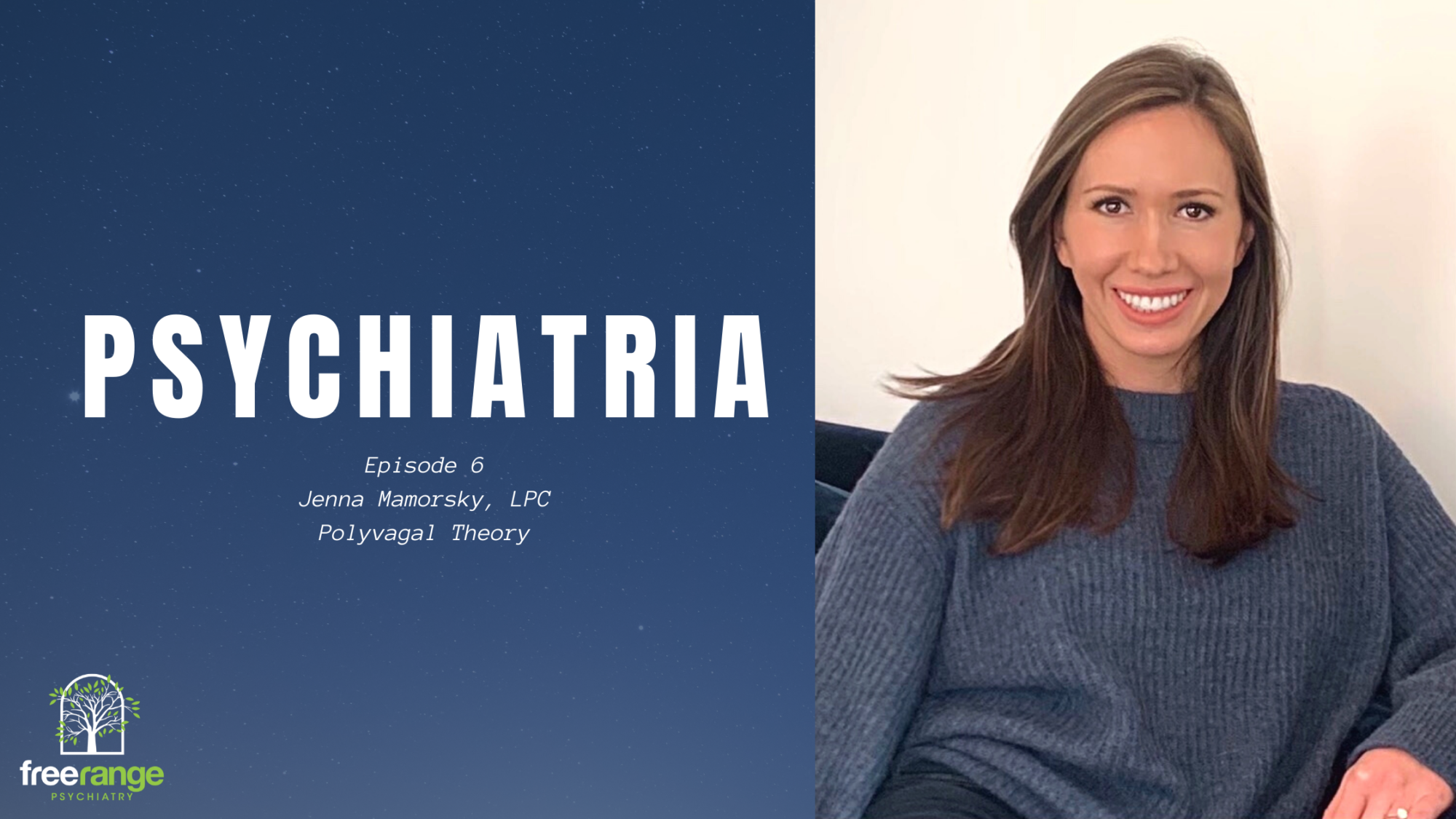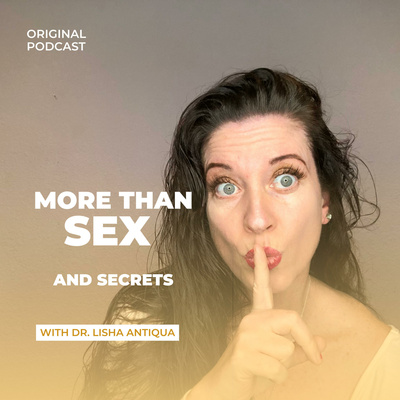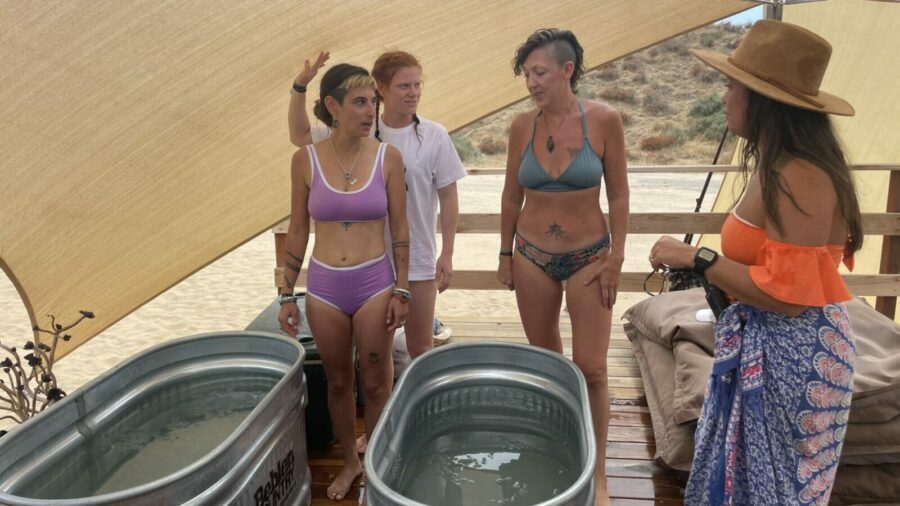In today’s episode of Psychiatria, you get to hear me and Jenna Mamorsky dive into a topic I’ve been dying to explore more for a long, LONG, time: Polyvagal theory. Ever since I learned about the vagus nerve in anatomy class in high school, I’ve been intrigued. However, even through my bachelor’s degree in behavioral neuroscience, I never learned more about this theory. If you google it, you find mostly either watered-down or hyper-scientific descriptions. I always found myself looking for a thorough middle ground. I’m very pleased to say that I think this episode, and this accompanying blog, will give you an understandable, actionable, and even enjoyable breakdown of what polyvagal theory is all about.
Polyvagal theory is based on the activity of the vagus nerve – the 10th cranial nerve. This nerve is the largest in our body and winds its way around all of our major organs. What this means, is that this nerve has some huge powers of connectivity. In short, the polyvagal theory describes how our autonomic nervous system functions, how we vacillate between different states, and how this contributes to physical and mental symptoms. Contrary to most basic understandings of the nervous system response, polyvagal theory says we have three main states:
- Immobilization/Freeze State- We shut down in the face of imminent danger
- Mobilization/Fight-or-Flight State – We learn to engage with danger by either fighting or fleeing.
- Social Engagement/Ventral State – We connect and feel safe. This is where we can rest, digest, and heal.
There are also two sides to the vagus nerve that have their roles to play in these different states. The ventral, or front, side responds to positivity and safety cues, hence why the social engagement state is often referred to as the ventral state. The dorsal, or back, side of the nerve responds to cues of danger and is a big player in the integration of trauma into the nervous system. Now, like with most things, balance is key here. We need both sides of our vagus nerve to be functioning in tandem, and we see problems arise when there is an imbalance, usually related to overstimulation of the dorsal side of the vagus nerve.
Y’all know I love learning new stuff, and this is no exception. Polyvagal theory is a great example of one of those super sciencey things that can be distilled down into usable information for the everyday human. How cool is that!? I find having a better understanding of my body and the way it functions to be so helpful on my journey. They say knowledge is power, but knowledge is also a resource.
Let me explain. When something happens and my body responds in a certain way that might be unsettling, I have a bit of information to balance the physical and emotional reactions with. I can notice the panic rising in my body and say, “Ah, the dorsal side of my vagus nerve is being stimulated.” Now, does it actually sound like that in my brain? Definitely not. Does it feel like it helps in the moment? Usually, no. However, it still helps me in the long run. I’m able to look back on previously mysterious experiences with a new perspective and learn things I wasn’t able to at the time. The beauty of our brains is that this process of reflection can actually have a positive impact on my body’s reactions the next time something funky happens.
Jenna and I certainly share this viewpoint on knowledge and how understanding can make all the difference. In the episode, we straight-up geek out on polyvagal theory. We get into how imbalances within vagal activity might happen, what symptoms can arise from it, and what polyvagal theory might have to say about self care. We even learn how we can improve our vagal tone – essentially, this is the measure of how quickly your nervous system can move between states. One of my favorite things about polyvagal theory is that the interventions it suggests are so joyful and silly. You’ll just have to tune in to find out what they are! ;)
You can find this episode of Psychiatria and all the others on your podcatcher of choice, embedded below, or at the links HERE. To connect with Jenna Mamorsky, head to her website: https://www.psychotherapywithjenna.com/
If you’ve already listened – What did you think? Do you have questions or feedback on something that could be improved? Ideas for future episodes? Any questions, comments, or feedback are welcome! Email me at podcast@freerangepsych.org. Want to keep up with the show and get a heads up on new episodes? Find me on Instagram (@PsychiatriaPodcast). I can’t wait to hear from you! Stay curious, dear listeners.
Powered by RedCircle
Links







Leave A Comment